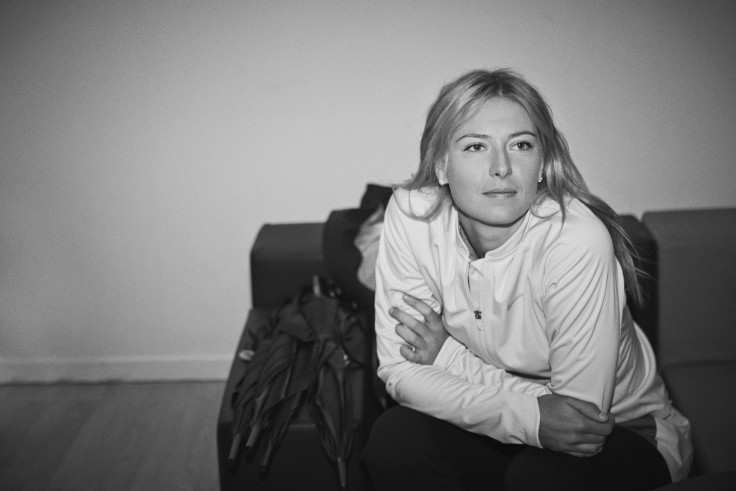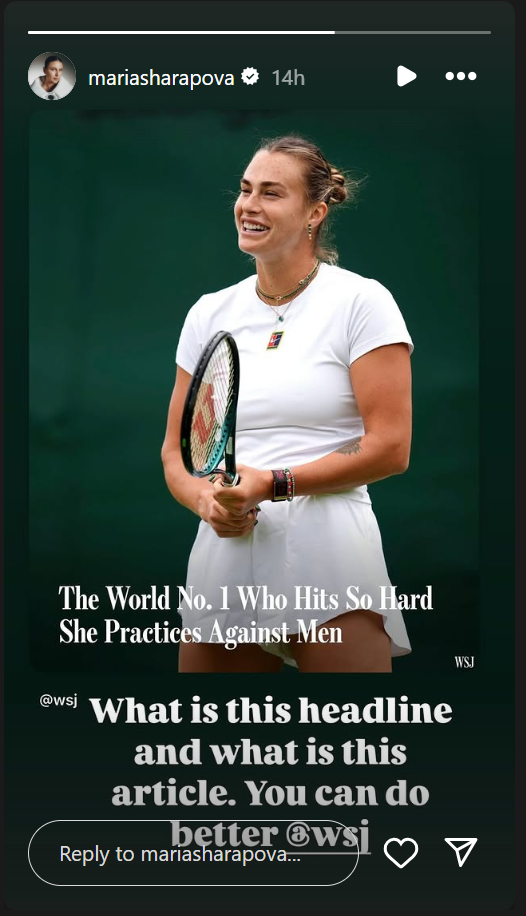Maria Sharapova Criticises Media Bias in Wimbledon Coverage of Aryna Sabalenka — 'You Can Do Better'
Sharapova's sharp critique reignites the conversation around gender bias in sports media

As Wimbledon 2025 continues to dominate sports headlines, a controversy unrelated to on-court action has taken centre stage. Maria Sharapova has spoken out against a headline about Aryna Sabalenka, criticising the media's framing of top female athletes. Her sharp response highlights long-standing concerns around gender bias in sports journalism.
Sharapova Slams 'Misleading' Headline About Sabalenka
The issue began when The Wall Street Journal published a feature on Aryna Sabalenka with the headline: 'The World No. 1 Who Hits So Hard She Practices Against Men.' The article revealed that Sabalenka, currently ranked World No. 1 in women's tennis, had practised with top male players Novak Djokovic and Jannik Sinner in preparation for Wimbledon.
While the article aimed to showcase Sabalenka's intensity and dedication, the headline implied novelty or shock that a female player could train with men. This framing did not sit well with Sharapova, who took to Instagram with a blunt critique: 'What is this headline and what is this article? You can do better @WSJ'.

A Powerful Voice in Tennis Weighs In
Maria Sharapova, a five-time Grand Slam champion and former World No. 1, is no stranger to the scrutiny that comes with success in women's tennis. Her public criticism of the headline did not explicitly defend Sabalenka but instead focused on how elite female athletes are often positioned in relation to their male counterparts.
Her pointed phrase, 'You can do better', is a call not just to one publication but to the broader sports media landscape. Sharapova's comments shine a light on how even subtle editorial choices can reinforce outdated perceptions about women in sport.
Media Bias in Women's Tennis: A Recurring Issue
Coverage of women's tennis, even at Grand Slam level, is often marked by patronising language or comparative framing. Headlines like the one targeting Sabalenka suggest that training with male players is unusual or necessary to validate a woman's athletic strength. This approach ignores the well-established fact that many female professionals seek out high-intensity training sessions regardless of their opponent's gender.
From the days of Billie Jean King to modern stars like Serena Williams, women have faced similar media narratives questioning their place and power within the sport. Sharapova's recent comment is part of a larger pushback against these persistent stereotypes.
Public Response and Growing Support
Following Sharapova's post, many fans and tennis observers took to social media to voice their agreement.
WSJ is 🐕 💩
— Yeticus Maximus (@RalphChiaia) July 7, 2025
WSJ are being sensationalist. Serena's hitting partner in her latter years was a German guy, I'm sure other women have male hitting partners too
— Lee (@HackneyManLee) July 7, 2025
Critics of the headline argue that such coverage undermines the credibility of female players and perpetuates a culture where women must be compared to men to be seen as exceptional. Some also claim that this is not the first time a female tennis player practices with a male athlete, so this should not be a big deal.
The support for Sharapova's stance suggests a growing appetite for change in how women's sport is reported. While major tournaments like Wimbledon now receive more, equal airtime and prize money, narrative bias still lingers behind the scenes.
A Moment for Reflection in Sports Journalism
Sharapova's comments serve as a timely reminder that language matters. Media outlets covering global events like Wimbledon bear a responsibility to portray athletes fairly, without defaulting to outdated comparisons.
As more high-profile athletes call out biased reporting, the hope is that sports journalism will evolve to meet the standards expected by both fans and players alike. Maria Sharapova's message is clear: it is time for the media to do better.
© Copyright IBTimes 2025. All rights reserved.




















